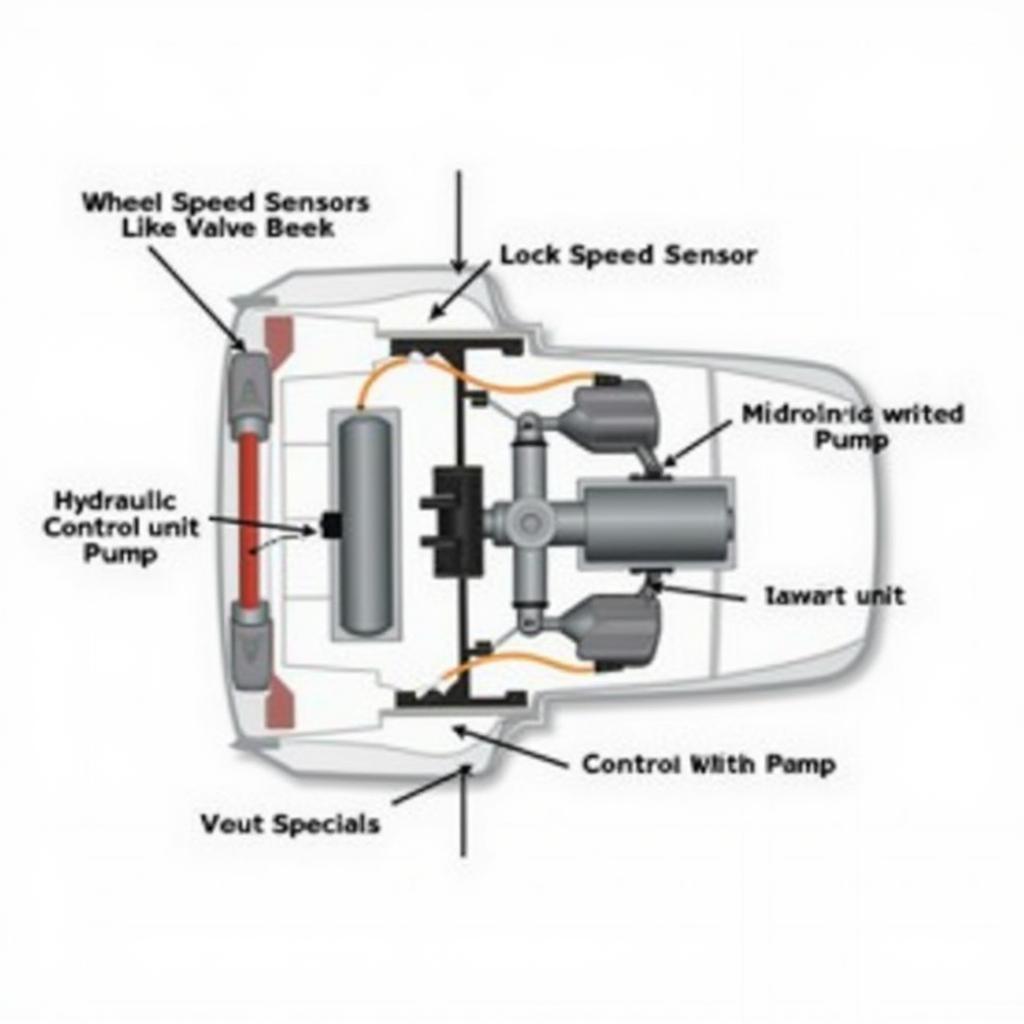A parasitic draw, also known as a key-off drain, can be a real headache for car owners. It occurs when something in your vehicle’s electrical system continues to consume power even after the ignition is turned off, leading to a dead battery. This guide will walk you through the process of checking for a parasitic draw, from basic checks to more advanced diagnostic techniques.
Understanding Parasitic Draw
What exactly is a parasitic draw? Simply put, it’s any electrical component that continues to draw power when it shouldn’t. This could be anything from a faulty interior light to a more complex issue within the vehicle’s computer system. A small amount of current draw is normal, usually around 50 milliamps, to maintain things like the clock and radio presets. Anything significantly higher indicates a problem. Identifying and fixing this issue is crucial to preventing a dead battery and ensuring your vehicle starts reliably. You can even perform many of the diagnostic steps yourself.
 Car Fuse Box Diagram
Car Fuse Box Diagram
How to Check for a Parasitic Draw: A Step-by-Step Guide
Gathering Your Tools
Before you begin, gather the following tools:
- A digital multimeter with a DC amp clamp (essential for measuring current draw)
- Test light (optional, but helpful for identifying faulty circuits)
- Fuse puller (to safely remove fuses)
- Wiring diagram for your specific vehicle (crucial for identifying circuits)
- Protective gloves and eyewear
Performing the Test
- Prepare your vehicle: Park your car on a level surface, turn off the ignition, and remove the key. Close all doors, trunk, and hood, ensuring all interior and exterior lights are off. Allow the vehicle to sit for at least 30 minutes to allow modules to go to sleep. This is crucial for accurate readings.
- Connect the multimeter: Disconnect the negative battery cable. Connect the red lead of your multimeter to the negative battery terminal and the black lead to the negative battery cable. Make sure your multimeter is set to measure DC amps.
- Observe the reading: The multimeter will display the total current draw. A reading above 50 milliamps suggests a parasitic draw. The lexus brake system warning light could even be related to a parasitic draw, although it’s less common.
- Isolate the circuit: Begin removing fuses one at a time, observing the multimeter reading after each removal. When the current draw drops significantly, you’ve identified the circuit causing the parasitic draw. If you experience a brake warning light, checking this site for information about what causes the brake warning light to come on can be helpful.
- Pinpoint the culprit: Consult your wiring diagram to identify the components within the affected circuit. Systematically check each component, using a test light if necessary, until you find the source of the draw. Sometimes a simple issue like a stuck relay can be the cause.
“Remember, patience is key when tracking down a parasitic draw. It can be a tedious process, but with careful observation and a systematic approach, you can pinpoint the problem,” advises John Miller, a seasoned automotive electrical diagnostician with over 20 years of experience.
Common Causes of Parasitic Draw
- Faulty interior lights, glove box lights, or trunk lights
- Malfunctioning radio or amplifier
- Defective alternator diode
- Stuck relay
- Issues with the vehicle’s computer system, especially after aftermarket installations. Problems with the braking system, as discussed on the page about the 2006 subaru outback brake warning light on, might be less directly related to parasitic draw.
- Aftermarket accessories installed incorrectly
“Always double-check the wiring of any aftermarket accessories. Improper installation can easily lead to a parasitic draw and a dead battery,” warns Maria Sanchez, a certified automotive electrician.
Conclusion
Checking for a parasitic draw is a crucial skill for any car owner. By understanding the process and following the steps outlined in this guide, you can save yourself time, money, and frustration. Don’t let a parasitic draw drain your battery and leave you stranded. Take control and keep your car running smoothly.
FAQ
- What is a normal parasitic draw reading? A normal reading is typically around 50 milliamps or less.
- Do I need any special tools to check for a parasitic draw? Yes, a digital multimeter with a DC amp clamp is essential.
- Can a parasitic draw damage my car? Over time, a parasitic draw can damage your battery, requiring replacement.
- What should I do if I can’t find the source of the draw? If you’ve followed the steps and still can’t identify the problem, it’s best to consult a qualified automotive electrician.
- Is it safe to disconnect the battery? Yes, it’s generally safe to disconnect the battery, but remember to take necessary precautions and refer to your owner’s manual.
- How often should I check for a parasitic draw? It’s a good idea to check periodically, especially if you notice your battery draining quickly.
- Can extreme temperatures affect parasitic draw? While temperature can affect battery performance, it typically doesn’t directly impact parasitic draw.

